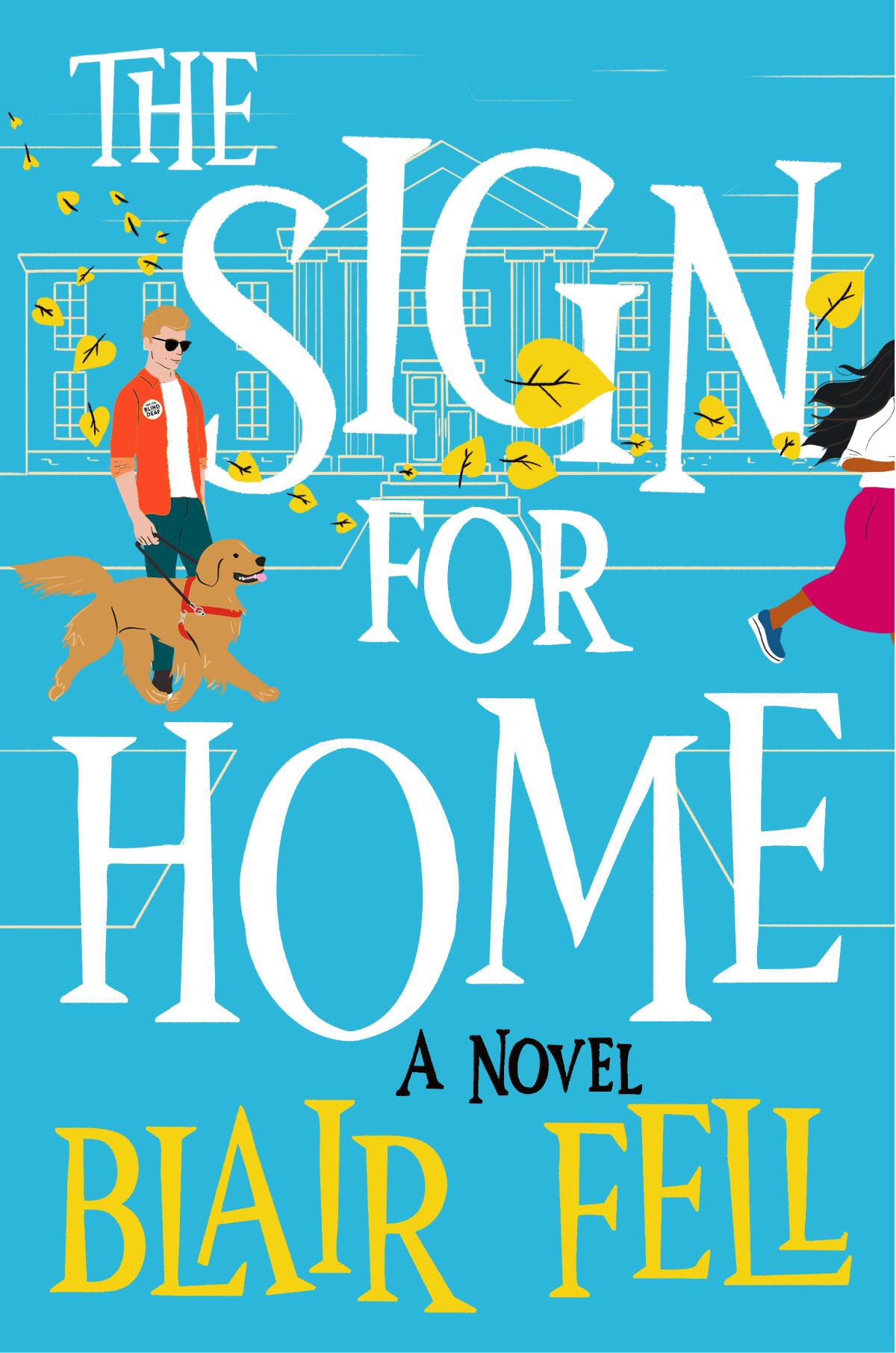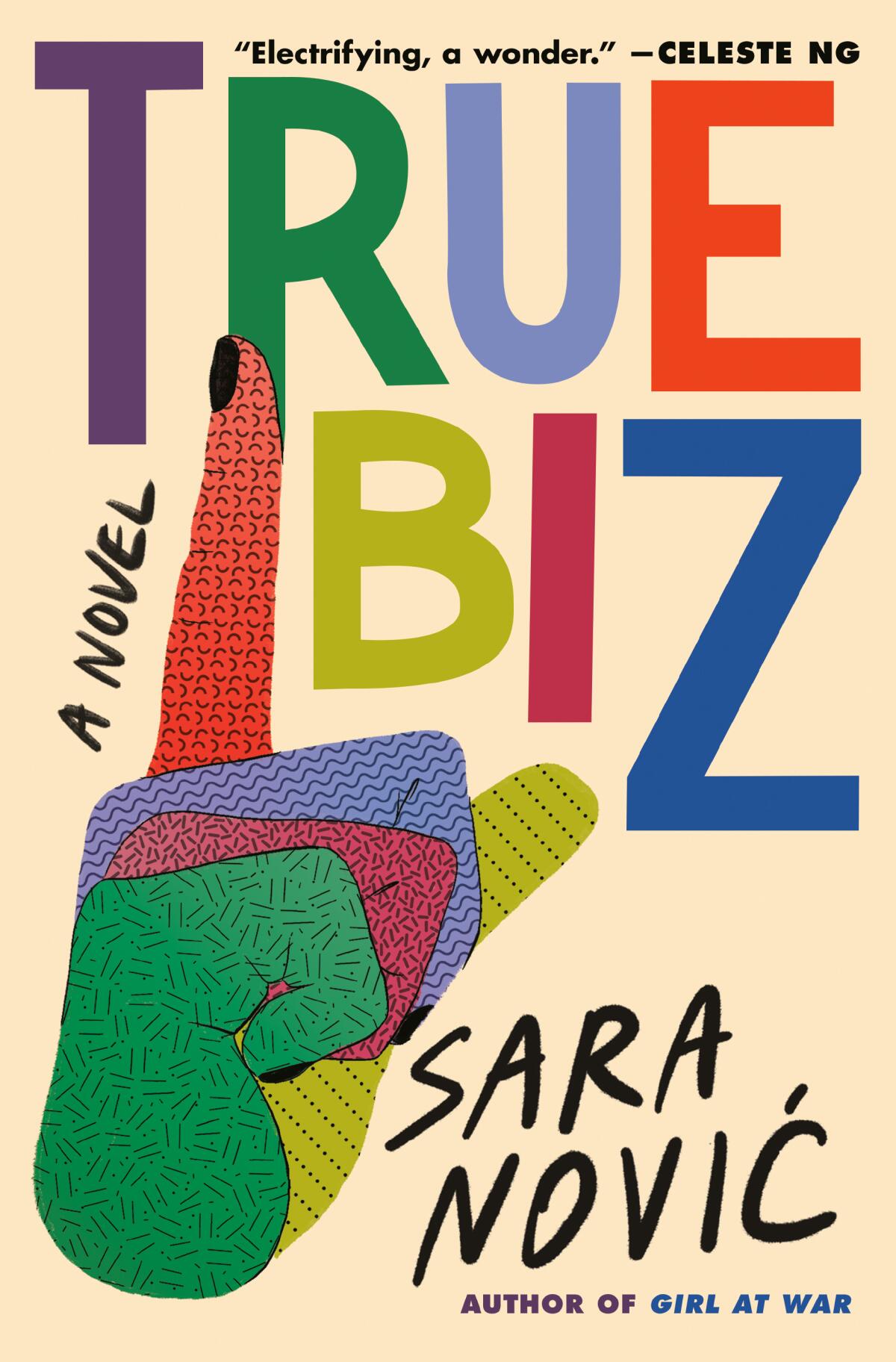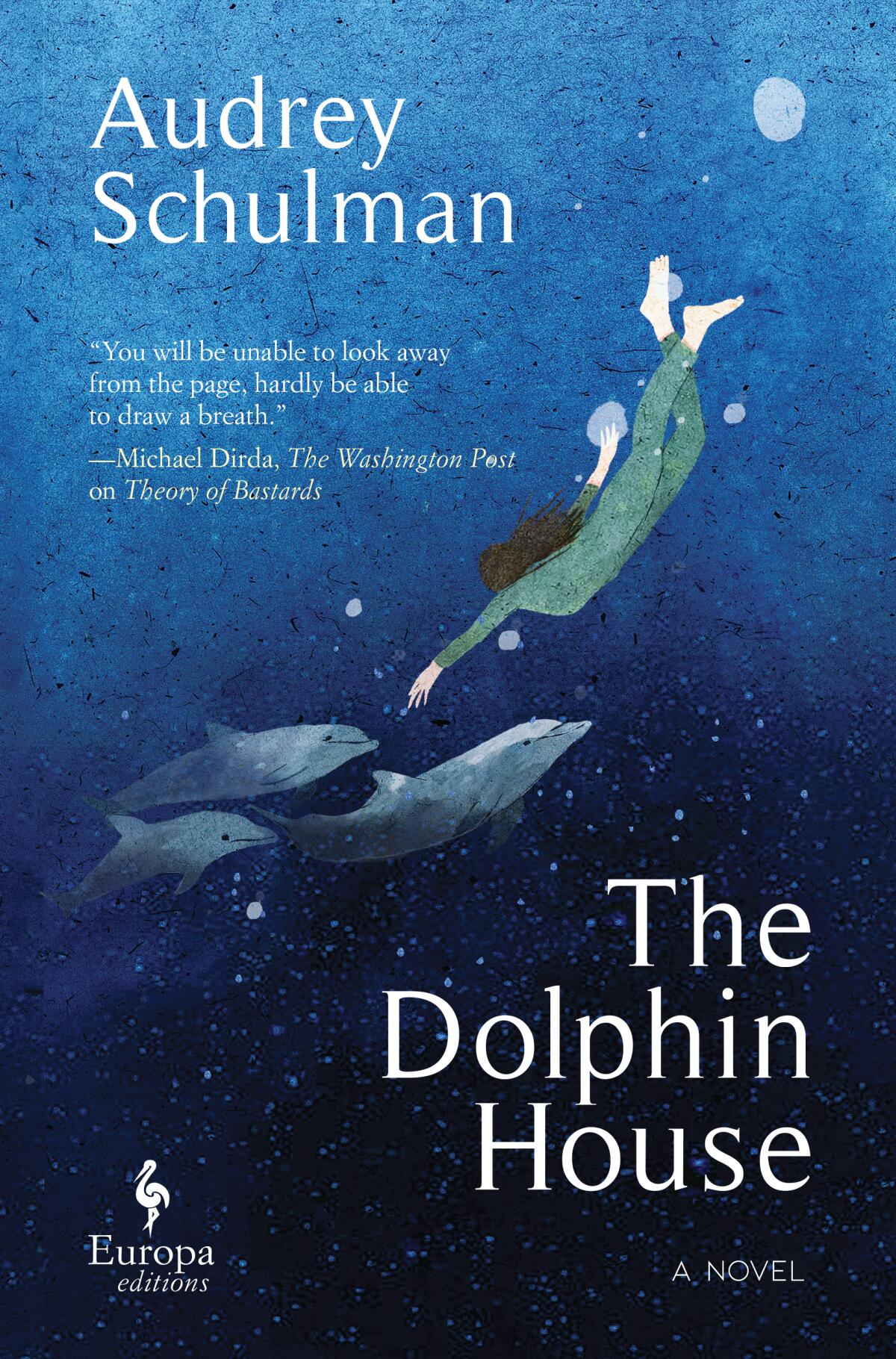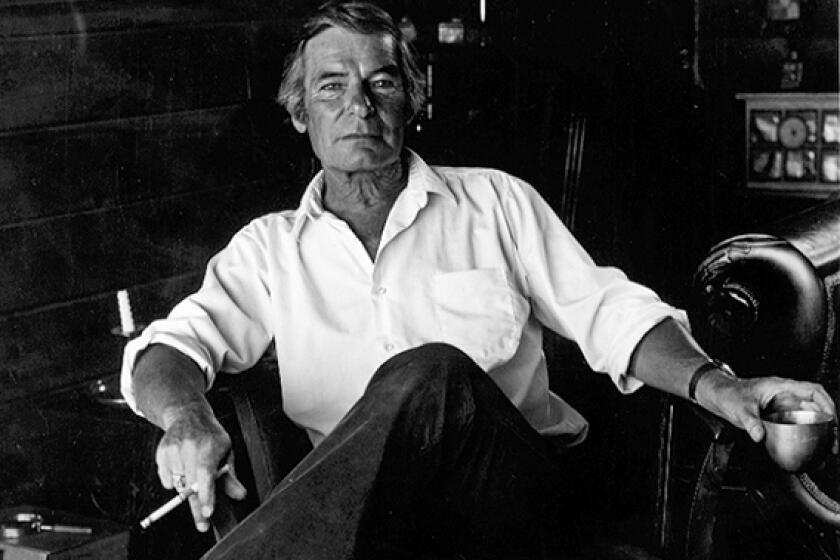Hollywood has finally paid attention to Deaf culture. Three new novels go even deeper

- Share via
On the Shelf
New novels about the Deaf world
True Biz
By Sara Novic
Random House: 400 pages, $28
The Dolphin House
By Audrey Schulman
Europa: 320 pages, $27
The Sign for Home
By Blair Fell
Atria: 416 pages, $27
If you buy books linked on our site, The Times may earn a commission from Bookshop.org, whose fees support independent bookstores.
Representation matters. For decades, it’s been a consistent refrain during my interviews with everyone from women environmentalists to Black sports executives to Native American directors. But it’s only in the aftermath of recent controversies (#OscarSoWhite) and horrors (the murder of George Floyd and hate crimes against Asians) that the world seemed to start listening.
Representation is at least tilting in the right direction, with more Latinos starring in bilingual TV shows, more Black playwrights on Broadway, more realistic gay characters and more women directors.
A casting director recently pointed out, however, that one group is still frequently left behind: people with disabilities. That is starting to shift too, at least for the Deaf and hard of hearing. After commercial successes like “Creed” and “A Quiet Place” that featured deaf characters in secondary roles, Hollywood has thrown its weight behind movies in which deafness is central, with last year’s Oscar nomination for “Sound of Metal” followed by Sunday’s best picture trophy for “CODA.”
The stories of deaf people are finally being told in novels too. Traditionally, there have been few prominent deaf novelists, especially among those who were born without hearing. (Donald Harington wrote more than a dozen novels after losing almost all his hearing due to meningitis at age 12; romance novelist Connie Briscoe fully lost her hearing at age 30.) There have also been few deaf characters in novels by hearing authors, with Carson McCullers’ “The Heart Is a Lonely Hunter” being a notable exception.
But April brings three new novels that revolve around deaf or hard-of- hearing protagonists as they strive to find their way in the hearing world. Even better, the books all do more than merely create empathy for characters with disabilities; despite their flaws, all are thought-provoking and entertaining, with vividly drawn and complex people.
Groundbreaking Sundance hit “CODA” created a space for Deaf actors on-set and made the environment accessible for all.
The most notable is “True Biz,” the second novel from Sara Novic, because she is the lone deaf author among the trio. (The phrase refers to the ASL sign that translates as “real talk.”) The book’s focus is Charlie, a teenage girl with minimal hearing whose parents opted for cochlear implants instead of teaching her sign language. After years of struggling in isolation at public schools, she finally gets to learn ASL and attend a local school for the Deaf and finds a new world opening up for her, even as it challenges her in new ways. (The book has already been optioned for a TV series to star Millicent Simmonds of “The Quiet Place.”)

Blair Fell, who makes his debut in “The Sign for Home,” has been an ASL interpreter since 1993. “The Sign” follows both Arlo, a young deafblind man coping with past traumas while seeking independence, as well as his new middle-aged interpreter, Cyril, who is also grappling with inner pain. Arlo has been cut off from much of the world by his overbearing religious family, yet he flourishes whenever given an opportunity to connect. A poignant scene in which he is reading and writing about Walt Whitman allows us to see the multitudes he contains.
Audrey Schulman’s sixth book, “The Dolphin House,” stands outside of Deaf culture … but that too makes a point. The novel, set mostly on the island of St. Thomas in 1965, focuses on Cora, a young woman who is almost entirely deaf. Without her glasses, which serve as a hearing aid, she reads lips and muddles through life without sign language.
Cora’s deafness has made her a keen observer of body language, however; this pays off in numerous ways when she stumbles into a job working with dolphins for a team of scientists. The dolphins teach her about their fears and desires even before she teaches them language. The men often do the same with their bodies and actions, as opposed to their words.
Ultimately, Schulman is more interested in the dynamics between humans and animals and between Cora and the older men. Yet the isolation Cora feels outside of any Deaf community is in its own way a look at Deaf culture, because it is often a fact of life for people without hearing.
Chelsea Lee and Jeremy Lee Stone, two actors in Amazon’s “Sound of Metal,” drew on their own experiences as Deaf people to bring authenticity to the film.
As a hearing person, I’m in no position to dissect how well these authors capture the nuances of the deaf experience. But this will presumably be true of the majority of readers. I would also presume that all three authors, hearing or not, want their books judged on the merits. All three feel too long, but only Schulman’s truly drags, repeating material and sometimes even phrases. It is also, despite its sharply observed characters (including the dolphins), somewhat humorless.

The other two have that first-novel problem in which the author overpacks the work with all the drama they can cram in and the points they want to make. (Novic is on her second book, but her acclaimed first effort, “Girl at War,” was not at all about deafness.)
Fell briefly digresses from the story to send Cyril to a conference where he learns about new approaches to signing, Haptics and Protactile signing, that provide more information (such as the speaker’s body language and tone). Though the section is essentially didactic, the concept — and therefore the scene — is riveting and relevant to the story.
Novic inserts frequent lessons, ostensibly prepared by a teacher at the school, and dives into minor characters to no appreciable point. These breaks disrupt narrative momentum, although some are fascinating, like the “Deaf President Now” student revolt against the board at Gallaudet University.
She’s at her best when she weaves ideas in organically: a confrontation between Charlie’s roommate, Kayla, who is Black, and Charlie’s romantic interest Austin, who is white (and privileged and oblivious), smoothly integrates the history of Black American Sign Language.
Jenn Shapland’s “My Autobiography of Carson McCullers” and Mark Doty’s “What Is the Grass,” about Walt Whitman, are hybrid memoir-biographies.
And Charlie’s coming-of-age story — her rage at her mother’s push for more surgery and implants over ASL, her developing relationships at school — is a moving and compelling argument about being Deaf as an identity, not a disability, and a powerful exploration of the fear of extinction as science improves hearing technology.

“Nine out of ten deaf kids had hearing parents, and those parents held Deaf fate in their hands — the fate of their own children, of course, and the future of the Deaf community at large,” she writes. “Problem being, most parents understood deafness only as explained to them by medical professionals: as a treachery of their genes, something to be drilled out.”
There is still a sense of the author trying to educate here, but it comes within the context of character and narrative. And at this point, the hearing really do have a lot to learn about Deaf culture and how to create a more just society. So even if Novic and Fell tilt toward didacticism, it’s for good reason. Maybe someday someone can write the Great American Novel about a deaf character without having to make the book all about their deafness. But at this stage in our social evolution it seems unfair to ask that of most any novel. As long as we have a country where nominating a Black woman for the Supreme Court leads to one side trotting out racial dog whistles, we are in for quite a wait.
In the meantime, spend a few hours with Cora, Arlo, Charlie and even as you see how challenging life is for them in a hearing society, you’ll start to understand the depth of their desire to be understood on their own terms, in their own language.
Many have failed to adapt Thomas Savage’s 1967 novel ‘The Power of the Dog.’ Jane Campion was perfect for it; both author and director deserve adulation.
More to Read
Sign up for our Book Club newsletter
Get the latest news, events and more from the Los Angeles Times Book Club, and help us get L.A. reading and talking.
You may occasionally receive promotional content from the Los Angeles Times.









